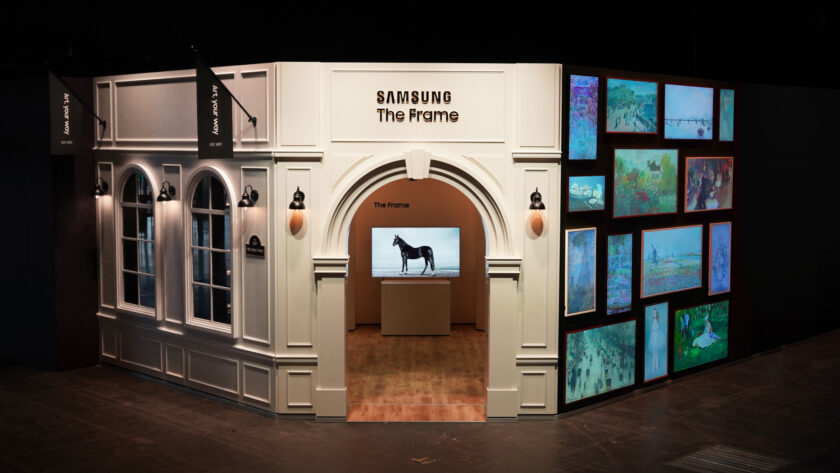Las Vegas | In the long term, hardware sales alone will not be enough for Samsung to maintain its market leadership. Margins on consumer TVs are already very low, but digital signage displays still offer healthy profits. However, competition from Chinese manufacturers like BoE, TCL, and Hisense is growing in the B2B display market. Established display vendors are looking for new subscription-based revenue streams beyond hardware. Samsung is focusing on platform businesses such as VXT, Samsung Art Store, and Samsung Ads.

Software: Samsung & Co Build on Platforms
At Art Basel, the world’s leading contemporary art show, Samsung showcased The Frame and the Samsung Art Store in a remarkable format – The Frame Lounge. Having a display manufacturer at this leading art fair is unprecedented. However, Samsung is serious about investing in the art market. The premium display, The Frame, with its matte screen and wooden bezel, is very popular with high-net-worth individuals who often purchase more than one unit. And yes – The Frame is more than just hardware as it comes with a content subscription service. Welcome to the new world of platform business.
It is not the hardware that drives additional purchases but rather the Samsung Art Store. For EUR 5.99 a month, customers can access a large library of contemporary art to display on The Frame. Over five years, this subscription generates an additional EUR 360 in revenue per customer, on top of the one-time hardware sales. Whether Netflix, Spotify or Disney+ – content subscriptions can be found in almost every household since the pandemic.

Subscription services are becoming a relevant part of digital signage
Samsung launched the new B2B platform VXT at ISE 2024 with great fanfare. VXT includes a content management system, remote device management, and an ad module, but its primary purpose is to be a global app store for the digital signage industry. Independent software providers and integrators with their own software can use VXT as a marketplace with a global reach.
Other display providers are not quite as far along yet, but PPDS, in particular, is developing its Wave Prostore into a distribution platform for third-party software providers.
It remains to be seen how third-party providers will respond to the new platform offering. The industry is cautiously approaching these new sales channels. Many providers are still unfamiliar with the idea of using a sales channel operated by a display manufacturer.
However, if established providers hesitate, next-gen software providers will seize the opportunity. Platforms are disruptive and have the potential to change industry rules, freeing digital signage from its niche and significantly expanding the market. Unfortunately, many market players still lack the courage to adopt new approaches. Samsung, PPDS, and others are pushing market boundaries to grow beyond hardware.
- ISE 2026: “Spark” Launches as a New Showcase for the Creative Industries
- M-Cube: “Digital Signage Touches Hearts and Moves Wallets”
- Over 700 Stores: Stratacache Rolls Out Retail Media Network for Iceland Foods
- Germany: DooH Market Surges Over 25% in 2025
- Year in Review 2025/2026: Pontus Meijer | Visual Art

